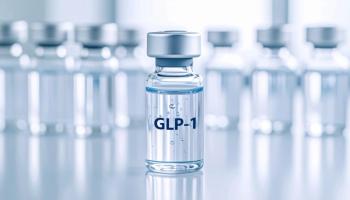
Naloxone Dispensing Found Higher at Facilities with Opioid Workflow
A retrospective study by Intermountain Healthcare Research found statistical significance between the rate of patients receiving naloxone with opioid prescriptions at health system pharmacies when compared to non-health system pharmacies. .
A retrospective study by Intermountain Healthcare Research found statistical significance between the rate of patients receiving naloxone with opioid prescriptions at health system pharmacies when compared to non-health system pharmacies. Health system pharmacies were found to dispense naloxone at a higher rate.
The study aimed to determine whether implementing an opioid workflow that includes naloxone education and dispensing would increase the chance of patients receiving naloxone with their opioid prescription.
The opioid overdose epidemic has drastically increased in recent years. Between 2016 and 2017, there was a 45.2% increase in synthetic opioid-related deaths in the United States. Pharmacists have the ability to dispense naloxone—an opioid reversal medication—without a prescription in all 50 states.
The multicenter observational analysis was conducted throughout 2018, using SelectHealth prescription claims and Intermountain's electronic medical chart and dispensing software to identify opioid prescriptions given at discharge. Patients included in the study were over age 18 years, insured with pharmacy benefits from SelectHealth, and prescribed opioid prescriptions upon discharge from a participating hospital or outpatient surgery unit. Patients with a history of a substance abuse disorder were excluded, as determined by a history of Suboxone use.
The results found that of the prescription filled at Intermountain Healthcare community pharmacies—in which the opioid workflow was implemented—1.73% were accompanied with naloxone. Of those filled at external pharmacies, just 1.26% were accompanied with naloxone.
Further analysis found that opioid prescriptions dispensed at Intermountain Healthcare were accompanied with naloxone at a rate of 1.23%, while opioids dispensed at non-Intermountain Healthcare pharmacies were accompanied with naloxone at a rate of 0.42%.
The Intermountain Healthcare workflow for opioid prescription involves evaluating red flags in patients requesting opioid prescriptions, as well as different steps for prescriptions less than 90 MME per day and more than 90 MME per day.
After the individual steps for red flags and different MME per day, the final 4 steps in the workflow are all the same:
- Evaluate the indication, dose, fill history, drug interactions, and relevant comorbidities
- Consider consulting the prescriber if there are any relevant concerns
- Fill or decline the prescription at the RPh professional's discretion
- Recommend patient education.
Some common red flags that pharmacists should look for include pattern prescribing, multiple family members receiving the same prescription from the same provider, known current or past regulatory action against prescribers, and a request for cash payment.
Criteria for identifying patients at risk for overdose include prescriptions for opioid doses above 50-100 MME per day, patients on rotating opioid regimens, and opioids for chronic pain management.
The study concluded that the different rates of naloxone dispensing suggest opportunities for increased utilization of naloxone CPA by pharmacists both with and without the Intermountain Healthcare opioid workflow.
Study results were presented during the
Reference
Miller B, Compagni K, Hansen H, Rauch M. Naloxone dispensing rates in a hospital-based community pharmacy. Presented at: American Society of Health-System Pharmacists Summer Meetings & Exhibition; June 8-12, 2019: Boston, MA.
Newsletter
Stay informed on drug updates, treatment guidelines, and pharmacy practice trends—subscribe to Pharmacy Times for weekly clinical insights.

















































































































































































































